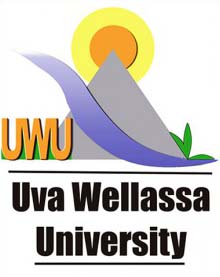Volume 04 Issue 02
01. Exploring Etymological Roots of COVID-19 Vaccine Hesitancy: A Study of Young Adults in Sri Lanka
I.W.C.D. Purijjala*, H.D.H.P. Wijerathne, D.S.A. Pathirana, K.K.S. Kumarasena, V.R. Dunuwila
Sri Lanka Institute of Information Technology, Malabe, Sri Lanka
INFORMATION
Journal Title : Journal of Technology and Value Addition
Volume : 4 Issue : 2
Page : 01– 17
Correspondence : : chamodidilhara1998@gmail.com
ABSTRACT
The most efficient and ideal way to reduce the COVID-19 epidemic is through vaccination. However, the biggest obstacle to universal vaccination coverage, though, is vaccine hesitancy. Therefore, the present study attempts to investigate underlying concerns of COVID-19 vaccine hesitancy among young adults in Sri Lanka through a cross-sectional survey that covered 601 young people between the ages of 15-35 years. An online self-administered questionnaire was distributed among the sample which was drawn under a simple random sampling technique. According to quantitative outcomes, a gradual increase in the hesitancy of the COVID-19 vaccine has been identified towards three stages of vaccine hesitancy: initial doses (37%), booster doses (59%), and future vaccination (60%). Greater reluctance was shown by respondents who identified as female, married, and Sinopharm recipients. Side effects and allergy-related issues were the concerns that were most frequently brought up in relation to vaccines. A third-party requirement, according to 34% of respondents, was the main reason why the vaccine was used. The results of the qualitative analysis showed that after receiving the initial dosages, most respondents were worried about “exhaustion and body pain,” “impaired eyesight,” and “menstrual cycle disorders,” which made them hesitant to receive the subsequent doses of the vaccine. The study provides a novel insight into the as-yet unidentified issues of vaccine hesitancy that result in COVID-19 vaccine refusal. Additionally, it offers insightful information to reduce skepticism about the COVID-19 vaccines by boosting vaccine safety and effectiveness, which can help direct future efforts to improve Sri Lankan public acceptance of COVID or any other vaccination program.
Keywords: COVID-19, Hesitancy, Qualitative, Underlying concerns, Young adults
2. Selection of Suitable Organic Manure for Higher Growth and Yield of Medicinal Plant Katuwelbatu (Solanum virginianum L)
U.D.A.S. Senevirathne1, C.S. De Silva2, A.M.A.S. Attanayake3, Shanthi De Silva4*
1 Medicinal Plant Garden, Ganewatta, Kurunegala
2 Institute of Indigenous Medicine, University of Colombo, Rajagriya
3 Royal Botanical Garden, Peradeniya.
4 Department of Agricultural and Plantation Engineering, Faculty of Engineering Technology, The Open University of Sri Lanka, Nawala
INFORMATION
Journal Title : Journal of Technology and Value Addition
Volume : 4 Issue : 2
Page : 18– 30
Correspondence : csdes@ou.ac.lk
ABSTRACT
Although, organic manures can improve the soil fertility, different organic manures may perform differently on soil fertility and on plant productivity. Katuwelbatu (Solanum virginianum) is one of the commonly used medicinal plants in the indigenous medicinal system in Sri Lanka for various ailments. In order to ensure the safety in health aspects of humans and to ensure the continuous supply of this plant’s parts in Ayurveda medicine, organic manures are used in cultivation of this plant. This research was conducted in Medicinal Plant Garden, Ganewatta, Kurunegala, Sri Lanka for a period of one year to identify the effect of organic manures on the productivity of Katuwelbatu (Solanum virginianum). This research was arranged in a Randomized Complete Block Design (RCBD) with five treatments and each treatment was replicated three times and each plot was having 20 plants and in total 300 plants were used. Treatments were Compost (10t /ha) (T1), Cattle manure (10t /ha) (T2), Poultry manure (10t /ha) (T3), Poultry manure 30% + Cattle manure 70% (10t /ha) (T4) and Untreated Control (T5). Data were collected on plant height (cm), number of leaves/plants, number of branches/plant, number of flowers/plant, number of berries/plant, plant fresh weight (g), berries weight (g), plant dry weight (g) and berries dry weight and analyzed using SAS statistical package (university version). The highest plant height (cm), leaf number, branch number, flower number, berries number, berries and plant dry weights (g), which were significantly greater (p<0.05) with poultry manure (10t/ha) treatment when compared to other treatments. Poultry manure (10t/ha) was found to be the most promising organic fertilizer to obtain a higher productivity from Katuwelbatu among different organic manures tested.
Keywords: Organic manures, plant growth, poultry manure, yield
3. Effect of Global Warming Induced Temperature and Water Stress on Musa acuminata (Cavendish Banana)
L.K.R.R. Jayakody1*, K.I.C. Amarasinghe1, C.S De Silva2
1* Department of Botany, The Open University of Sri Lanka
2 Department of Agricultural and Plantation Engineering, The Open University of Sri Lanka, Nawala, Nugegoda
INFORMATION
Journal Title : Journal of Technology and Value Addition
Volume : 4 Issue : 2
Page : 31– 55
Correspondence : ramanijayakody@yahoo.com
ABSTRACT
Anthropogenic activities have changed the global climate adversely. Plant growth and development depend on the atmospheric temperature and soil moisture level. When the temperature exceeds the optimum and when there is water stress also, plants respond negatively showing a sharp decline in growth and development affecting the yield. This study intends to investigate the impact of simulated temperature and water stress reflecting global warming on in vitro propagated banana plants. It is presumed that this research would help in planning the cultivation of said plants to obtain a substantial yield. Shoot initiation of banana was carried out using sword suckers on Murashige and Skoog medium with 2.5 mg/L Benzyl Adenine and shoot proliferation on MS medium with 4.0 mg/L BA. Rooting occurred on the shoot proliferation medium itself by maintaining for 4-5 weeks after the shoots have developed well. After acclimatizing the plants were transferred into two locations viz. temperature regulated polytunnel (maximum temperature 35 ℃) and plant house (ambient temperature). Plants in each location were further subjected to 100% and 50% moisture levels. All the experiments were repeated twice to justify the replication of temperature effect. The mean values of the vegetative parameters were taken for statistical analysis. The results revealed that the vegetative and hence the reproductive growth of in vitro propagated banana were not successful under stressful conditions, because all the plants exposed to temperature stress and water stress were dead at the 40th week of the study. Therefore, banana will not be a successful crop under the induced global warming conditions, because the plants under the stresses did not show either vegetative or reproductive growth successfully.
Keywords: Banana, global warming, growth parameters, temperature stress, water stress
4. The Predicted Yield Curve of Interest Rates Involving Bjork and Christensen Four Factor Model
M. G. Ogungbenle
Department of Actuarial Science, University of Jos, Nigeria
INFORMATION
Journal Title : Journal of Technology and Value Addition
Volume : 4 Issue : 2
Page : 56 – 79
Correspondence : moyosiolorun@gmail.com
ABSTRACT
Modelling the term structure of interest rate has become very important in recent days because the predictability of the variables induces informed decision to various market stakeholders, regulatory authorities and investors who might need such information. A deep knowledge of this model’s structure is essential in appraising the interest rate risk of financial institutions since investment decisions resulting from liquidity gaps have effect on interest rate risk. The study contributes to the asset-liability administration of Nigerian financial institutions thereby providing a solution to the cost effective approximation of defined term structures problem which are applied in establishing fund transfer pricing mechanisms. Therefore, investment houses require estimations of interest rates so as to price derivative instruments and for pension funds, future interest rate are of keen interest to estimate the value of their assets and liabilities. The objectives of the study are (i) To predict the in-sample of the Nigerian Eurobond under the Bjork and Christensen four-factor model (ii) To derive the console rate and short term rate and show the mathematical relationship between the rates (iii) To investigate whether time to maturity has an effect on term structure of interest rate. (iv) To derive the yield function from the forward rate function. The approach used to estimate the model parameters is the ordinary least square method. The resulting computed parameters were used to estimate the in-sample yield after it was being substituted in the model. Test of goodness of fit was conducted and the result reveals that the model fits in well with the observed data yield and this was demonstrated by the model’s -square adjusted by comparing yield curve between the observed and predicted yields.
Keywords: Bjork and Christensen four-factor model, Predictability, term structure of interest rate, yield curve model


